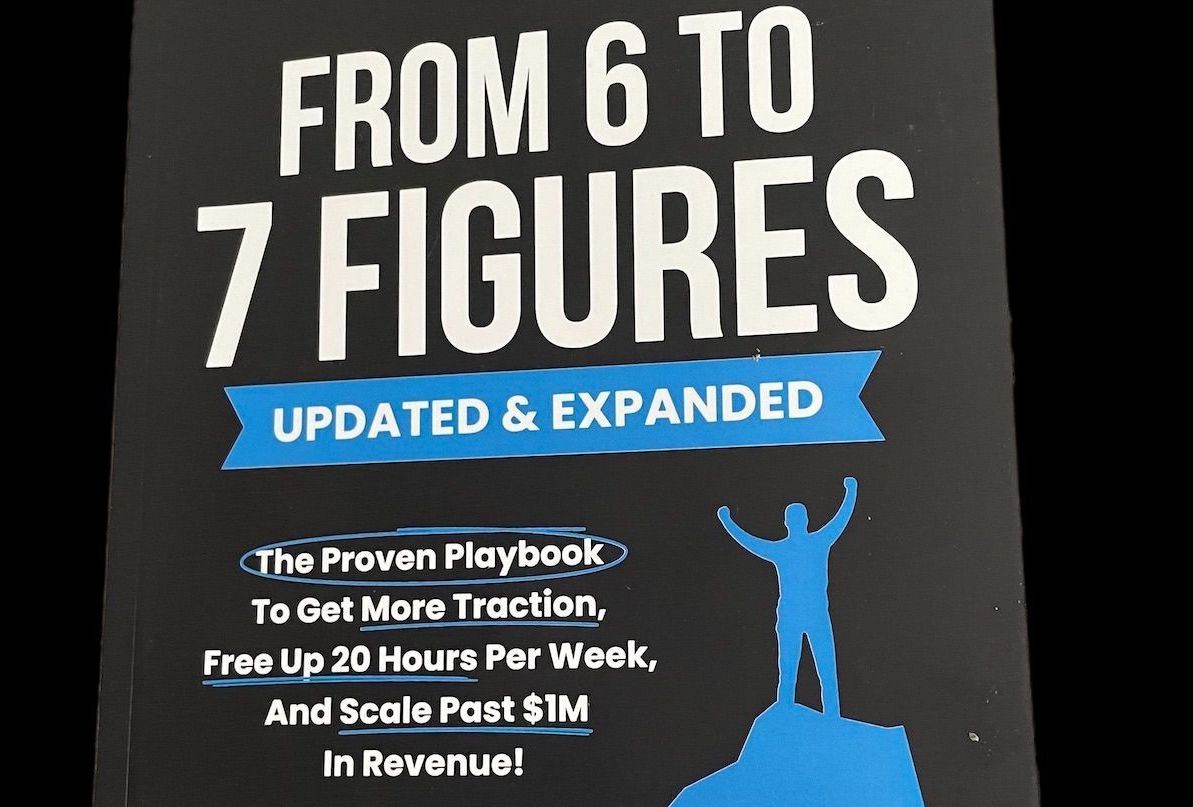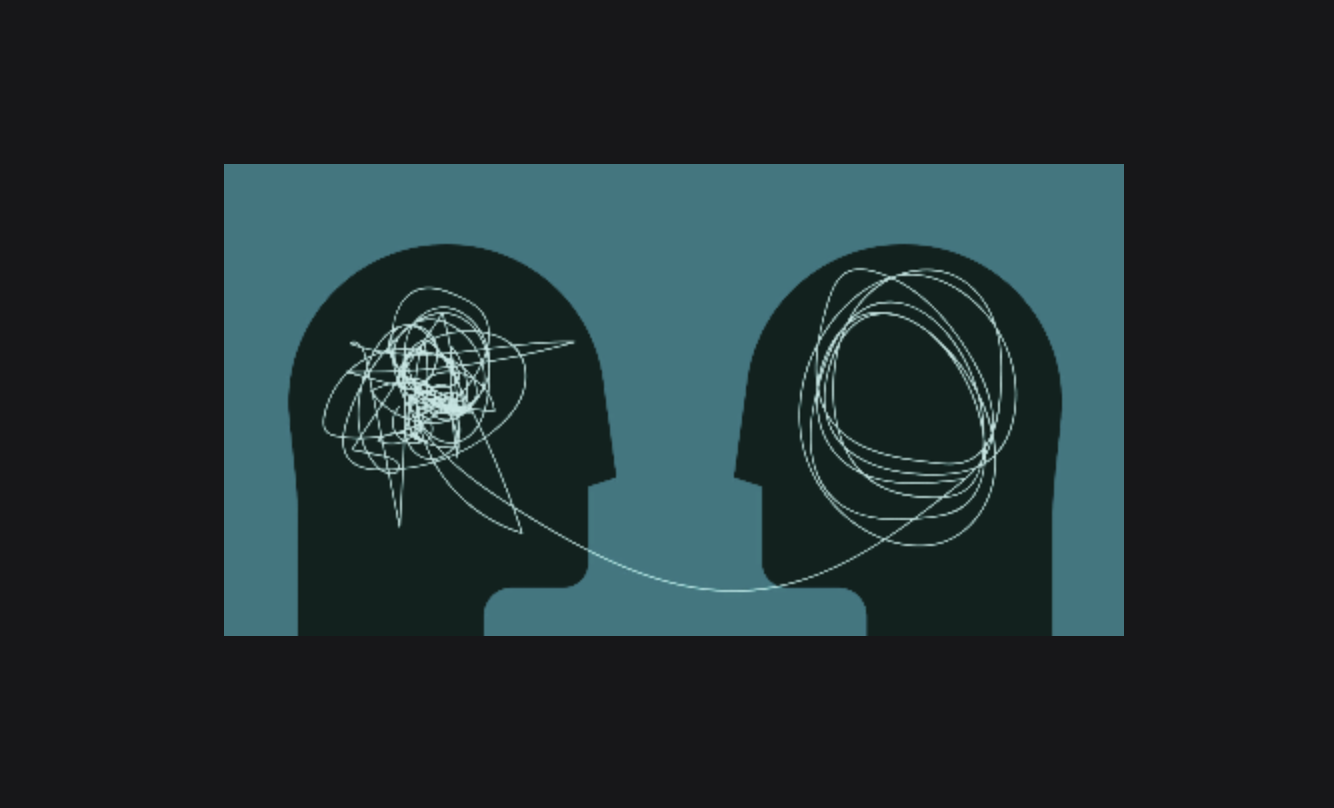Leaders Eat Last is a book about the connection between leaders and their teams. In it, author Simon Sinek explores the question of why some teams pull together and others don’t.
His idea is that the best leaders are those who put their team’s needs before their own. He argues that leaders who take care of their team members create a work culture of trust and cooperation that leads to a more productive and motivated workforce.
The book, Leaders Eat Last, is divided into two parts. In the first part, Sinek looks at the biology of leadership and how the brain is wired to respond to stress. He argues that leaders need to understand how stress affects their team members in order to effectively manage it.
In the second part, Sinek provides practical guidance on how leaders can create a strong culture of trust and cooperation within their team. He offers concrete examples of how this can be done through things like setting clear expectations, providing support, and showing appreciation.
Leaders Eat Last: Key Takeaways
1. The title of the book, Leaders Eat Last, is a metaphor for the idea that true leaders should take care of their people so that their people will take care of them.
2. The book’s central thesis is that companies and organizations succeed when their leaders create an environment in which people feel safe.
3. Sinek argues that human beings are social animals and need to trust and feel safe in order to cooperate with one another.
4. He further contends that the best way to foster trust and safety is through what he calls the “Circle of Safety.”
5. The Circle of Safety is created when leaders put their people before themselves and demonstrate that they are willing to sacrifice for their people.
6. Sinek uses the example of the U.S. Marine Corps to illustrate how the Circle of Safety can lead to successful outcomes even in the most difficult circumstances.
7. He also discusses how a lack of safety can lead to disastrous results, as evidenced by the events of 9/11 and the Iraq War.
8. Sinek argues that businesses can create a Circles of Safety by establishing core values, encouraging transparency, and promoting collaboration over competition.
Leaders Eat Last: Key Ideas
In his book Leaders Eat Last, Simon Sinek breaks down his concepts into 8 parts. These eight sections describe a real leader’s journey toward ensuring his people’s trust and loyalty.
Once a leader has gained their confidence and established a secure environment in which everyone feels welcome, he ensures his success as a boss by assuring high performance in the unit.
Part 1: Our Need to Feel Safe
The first section, “Our Need to Feel Safe”, explains the importance of leaders establishing a safe environment in which people feel comfortable sharing their ideas. A safe environment is essential for creativity and innovation to occur.
The need to feel safe is one of the most fundamental human emotions. From the time we are born, we humans have a need to feel safe. As infants, we seek the warmth and protection of our mother’s arms.
As we grow older, we build houses and fortify them with locks and alarms, seeking to keep out intruders. We form families and small communities in order to feel more secure.
Even in today’s world, with all the comforts and conveniences that come with living in developed countries, the need for safety is still a powerful force in our lives. Just turn on the news any evening and you will see stories about wars, natural disasters, crime, and terrorism – all of which serve to remind us of our need to protect ourselves.
In many ways, it is this need for safety that drives the progress of humanity. We build taller buildings and faster cars in an effort to keep ourselves safe from harm. We create new technologies to help us better monitor our surroundings and respond to threats.
And we work to create a more just and peaceful world, so that everyone can enjoy a sense of security. The need for safety is a fundamental part of who we are as human beings, and it will continue to motivate us. This need for safety is deeply ingrained in us, and it shapes many of our actions, decisions, and job satisfaction.
The leaders of exceptional businesses all focus on one important thing – a culture in which the higher-ups provide shielding from above, and the group members on the ground look out for one another.
Part 2: Powerful Forces
The second section, “Powerful Forces”, is based on the idea that humans are social animals who are hardwired to cooperate. He explains that we have three powerful drives that motivate us: the need to feel safe, the need to feel valued, and the need to feel like we belong.
When leaders take care of their people and create an environment in which their needs are met, they are implicitly telling their employees that they matter and that their safety is important. When these needs are met, we naturally want to contribute to something larger than ourselves.
Mother Nature hardwired the human body this way. When we feel safe, our brain releases a chemical called oxytocin. Oxytocin is also released when we hug someone we care about or see a loved one smile. This release of oxytocin creates a good feeling of trust and connection between people. It’s like psychological Velcro that brings people together and makes them want to cooperate and help each other.
When leaders fail to take care of their people, the opposite happens. The brain releases a hormone called cortisol in response to stress. When cortisol is released, it creates feelings of fear and isolation. We become focused on our own survival and self-protection. We withdraw and become less trusting of others.
This is why a bad boss can make us feel like we’re all alone, even when we’re surrounded by people. The good news is that the effect of oxytocin is stronger than the effect of cortisol. So even if you’ve had a bad experience with a leader in the past, you can still be open to the possibility of trusting someone again.
Two other main chemicals, endorphins and dopamine, are responsible for making us feel good. They’re released when we accomplish something or have a positive experience.
Endorphins are nature’s way of numbing pain, and dopamine is like a shot of adrenaline that gives us energy and focus. Both of these chemicals are important for leaders because they help us persevere through hard times and stay motivated.
Part 3: Reality
The third section, “Reality”, Sinek believes there are three essential ingredients for any leader who wants to create a lasting legacy: reality, the circle of safety, and empathy.
Reality is that the cost of entry for a leadership position is complete and utter selflessness. In order to be able to put the needs of your team before your own, you have to first be able to take care of yourself. This means making sure that your own physical and mental health are in good shape so you can be emotionally and mentally present for your team.
The circle of safety is the second ingredient and it refers to the need humans have to feel safe. We are social animals and we naturally want to feel like we are part of a group. This need is what allows us to trust others and to collaborate effectively.
When we feel safe, we are able to take risks, be creative, and truly work as a team. An effective leader will create a circle of safety within their team so that their employees feel secure and are able to do their best work.
The third ingredient, empathy, is the ability to see things from other people’s perspective. This doesn’t mean that you need to agree with everything they say or do, but it does mean that you should be able to understand how they are feeling to see things from their perspective. By combining these three ingredients, any leader can create a lasting legacy.
Part 4: How We got There
The fourth section, “How We got There”, breaks down Baby Boomers and Generation X and how they view work. He then goes on to talk about Millennials and how they are different in the workplace.
Boomers were raised during a time of great prosperity. They were told that if they worked hard, they would be rewarded with a good job and a comfortable life. This generation is known for their work ethic and their loyalty to their companies. Sinek believes that the Boomers have passed down their work ethic to Generation X.
Generation X is the group of people born between 1965 and 1980. This generation was raised during a time of great change. The Cold War ended, technological advances were made, and companies began downsizing. Gen Xers are known for being independent and resourceful. They are also known for being skeptical of authority figures.
Sinek goes on to talk about Millennials, the group of people born between 1981 and 1996. This generation was raised during a time of great uncertainty and hard times. 9/11 happened, the dot-com bubble burst, and the housing market crashed. Millennials are known for being collaborative and optimistic. They are also known for being comfortable with change.
Sinek believes that the way we were raised has a lot to do with our belief system. He says that our parents, education, religion, and friends all play a role in shaping our beliefs.
- Our parents teach us how to behave in the world.
- Our education teaches us what to believe.
- Our religion tells us what is right and wrong.
- Our friends reinforce our beliefs.
Sinek says that the reason Millennials are different in the workplace is because they were raised during times of crisis and uncertainty. They are comfortable with change and they are collaborative. He believes that if we want to create a more productive workplace, we need to embrace these differences.
Part 5: The Abstract Challenge
The fifth section, “The Abstract Challenge” outlines a challenge to inspire people to do something that’s not in their self-interest. The problem is that we have evolved to put ourselves first in today’s world. Our selfishness is natural, but it’s also destructive and can’t last long term.
Abstraction is the process of taking away specific characteristics from an object or concept in order to focus on its more general qualities. When it comes to how we feel about other people, abstraction allows us to see them as human beings first and foremost, rather than as members of a specific race, gender, or ethnic group.
This can be helpful in situations where we may be tempted to judge someone based on their outward appearance. By focusing on the person’s inner qualities, we can better understand and connect with them on a deep level.
In addition, abstraction can help us to empathize with others by putting ourselves in their shoes and understanding their perspective. Ultimately, abstraction is a valuable tool for promoting understanding, respect, and compassion in our relationships with others.
On the flipside, the more abstract we make a person in our own minds, the more likely we are to make decisions that are at the expense of others. This is increased by the physical distance that separates many business leaders from each single person. These hierarchical structures produce the feeling that our actions’ effects are less concrete than they otherwise should be.
Leaders need to find a way to inspire people to do things that are not in their self-interest. The question is how do you lead someone who would rather not be led?
Sinek outlined these rules to manage the abstraction:
Rule 1. Keep It Real—Bring People Together. Real, live human interaction is how we feel a part of something, develop trust and have the capacity to feel for others. It is how we innovate.
Rule 2. Keep It Manageable—Obey Dunbar’s Number. Professor Dunbar figured out that people simply cannot maintain more than about 150 close relationships.
Rule 3. Meet the People You Help. As social animals, it is imperative for us to see the actual, tangible impact of our time and effort for our work to have meaning and for us to be motivated to do it even better.
Rule 4. Give Them Time, Not Just Money. A leader of an organization can’t simply pay their managers to look out for those in their report. An empowering leader can, however, offer their time and energy to those in their care, and in turn those managers would be more willing to give their time and energy to their subordinates.
Rule 5. Be Patient—The Rule of Seven Days and Seven Years. I have no data to say exactly how long it takes to feel like we trust someone. I know it takes more than seven days and I know it takes fewer than seven years. I know it is quicker for some and slower for others. No one knows exactly how long it takes, but it takes patience.
Part 6: Destructive Abundance
The sixth section, “Destructive Abundance” applies to leadership. The idea is that in order for a leader to be effective, they need to have a clear vision and purpose, and they need to be able to share that vision and purpose with their team.
When poor leaders don’t have a clear vision or purpose, they tend to focus on their own needs and selfish desires, which can lead to them making decisions that are harmful to the team. Sinek goes on to explain that there are three main types of leaders: those who lead with their ego, those who lead with their head, and those who lead with their heart.
- Ego-driven leaders tend to be self-centered and focused on their own success
- Head-driven leaders tend to be more rational and focused on achieving results
- Heart-driven leaders, on the other hand, are more compassionate and focused on helping others achieve their goals
Sinek argues that the best leaders are those who lead with their heart, as they are more likely to create a positive environment where employees feel valued and appreciated.
Sinek also outlines the 5 leadership lessons to become a good leader:
- Lesson 1: So goes the culture, so goes the company. The success of a company depends on the culture.
- Lesson 2: So goes the leader, so goes the culture. The leader is the one that influences the company’s culture, be it in a positive or negative way.
- Lesson 3: Integrity matters. As long as leaders adhere to a set of values for the company, its members will do the same.
- Lesson 4: Friends matter. They are an important part of our lives.
- Lesson 5: Lead the people, not the numbers. Leaders should care about leading their people, not the number that these people may represent.
Any leader that takes into account these good leadership lessons and creates a Circle of Safety within the entire company will be successful.
Part 7: A Society of Addicts
The seventh section, “Society of Addicts”’ pertains to organizations and the workplace. The author explains that in an addict society, people are driven by three things: pleasure, avoidance of pain, and a sense of belonging.
Addicts will do whatever it takes to get their fix, including sacrificing their own well-being and the well-being of those around them. Sinek goes on to explain that in order for an organization to be successful, it must first create a safe environment where people feel like they belong.
People need to trust that their leaders have their best interests at heart and that they are not going to be taken advantage of. Effective leaders need to eat last, meaning they need to put the needs of others ahead of their own. Only then will employees be able to truly thrive and be productive.
Part 8: Becoming a Leader
The eighth section, “Becoming a Leader” uses the example of a Marine Corps platoon. In the US Marine Corps, this concept is known as “mission first, people always.”
The leader’s job is to make sure that the team has what it needs to succeed and that everyone is on the same page. Sinek goes on to say that in order for a leader to be effective, they must have trust and respect from each group member. This can only be achieved if the leader is willing to sacrifice their own needs for the good of the group.
Sinek provides several examples of how this concept has played out in history, both in terms of successful organizations and individuals. He also offers some tips on how leaders can create a culture of trust and respect within their own teams.
He explains that in order for a group to be successful, the leader must be willing to put the needs of the group above their own. This is because, as humans, we are wired to seek out and follow strong leaders.
The problem is that many people who find themselves in leadership role positions are more concerned with their own needs and agendas than they are with the needs of those they are supposed to be leading. This often leads to disastrous results.
Sinek goes on to explain that there are two types of leadership: Heroic and Hippocratic.
- Heroic leaders are those who put their own needs above those of the group. They seek glory and recognition for themselves, and often end up leading their followers into danger.
- Hippocratic leaders, on the other hand, put the needs of the group above their own. They make decisions based on what is best for the group, even if it means sacrificing their own safety or comfort. This type of leader is much more likely to be successful in the long run.
The book contains many other interesting insights, but the overall message is clear. In order to be a true leader, you must be willing to put the needs of your followers above your own. Only then will you be able to earn their trust and respect.
Leaders Eat Last: Book Summary Conclusion
Overall, Leaders Eat Last is a well-written and insightful book. It provides readers with a new perspective on leadership and how it can be used to create a more positive and productive work environment.
Sinek reminds us that the best leaders are those who understand this concept and apply it to their own leadership style. Great leaders put their team’s needs first, ahead of their own. This allows them to create a more positive and productive work environment.
- Leaders must learn to trust their people and give them the space to do their jobs.
- Leaders who are afraid to show their weaknesses will never earn the trust of those they lead.
- Leaders must provide their people with a sense of certainty in order to gain their trust.
- Leaders must create an environment in which people feel like they belong in order to earn their loyalty.
- Leaders must give their people a sense of purpose in order to inspire them to achieve great things.
Sinek also discusses the importance of trust in a leader-follower relationship. He argues that deep trust is essential for a leader to be effective. Without trust, a leader will not be able to properly motivate and inspire their team.
In conclusion, Leaders Eat Last is a book that every leader should read. It is packed with valuable insights that will help leaders build trust and loyalty among their followers. Get a copy of the book today!






